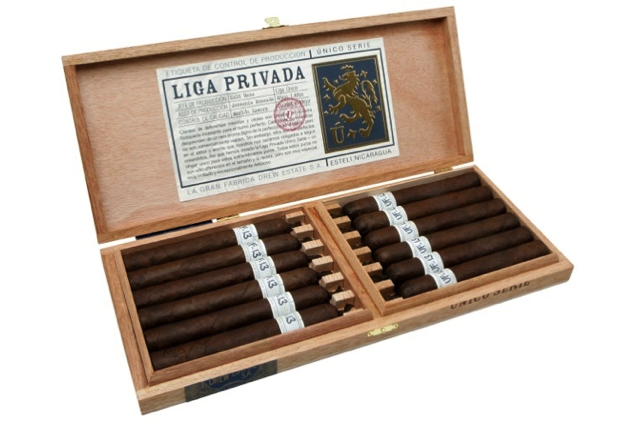One of the most anticipated cigars of the year is the first in Drew Estate’s Único Serie. Dubbed the Dirty Rat, or Rata Sucia in Spanish, is not all that new. Drew Estate began handing out preproduction samples as early as October of 2009. I first reviewed a preproduction sample of the Dirty Rat way back in December of 2009.
The idea behind this blend was to produce a Corona-sized cigar with made with seven different tobaccos — five different fillers + the wrapper and binder. Unfortunately, it costs almost the same to produce this blend in a Corona as it does to make it in a Double Corona size and it needs to be made in the Corona to keep the flavor and strength profile.
The wrapper used on the Dirty Rat is grown in the Connecticut River Valley. And while it resembles Broadleaf, which is used on Liga Privada No. 9, it is actually the same Havana-seed wrapper that is used on the Liga Privada T52. The binder is Brazilian, and the filler is a mix of Nicaraguan and Honduran tobaccos.
As mentioned earlier, the Dirty Rat is the first release in the Ünico Serie, which will basically be a group of specific cigar sizes (vitolas) produced in the Drew Estate factory using blends that are different from the standard Liga Privada No. 9 or the Liga Privada T52 blends. Drew Estate President Steve Saka said it thusly:
At this point, we have made 200 or more Liga Privada blends…There are probably nine or 10 of them so far that are exceptional….They’re cigars that work as a particular size, such as a lancero or Corona, with the blend being unique to that particular vitola. The Dirty Rat is a great example of this, so we have decided to introduce this as the first cigar in the Ünico line.
Saka has also credited Nicholas Melillo for creating the Dirty Rat telling SMOKE:
Nicholas Melillo created the “Dirty Rat” blend using the five-fillers-in-a-Corona techniques he developed on his own and it was simply delicious. We have been making them since early 2009 in small batches for own consumption and to share with friends. We have been discussing the possibility of releasing this product into the marketplace, the problem is it costs so much to make this Corona due to the difficulty of the bunch.
The Dirty Rats will come in boxes of 12, priced at $12 for each cigar. Interestingly, these will NOT be a limited release, but will be produced “in small batches as long as there is a demand for them in the market.” The boxes for the Dirty Rats look like this.
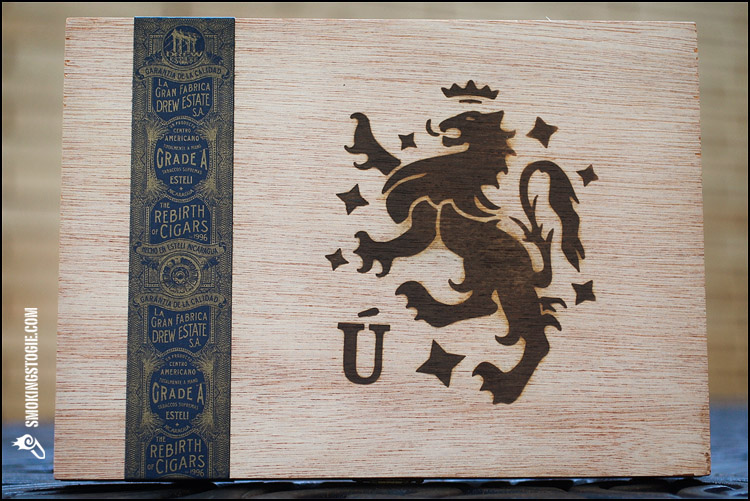

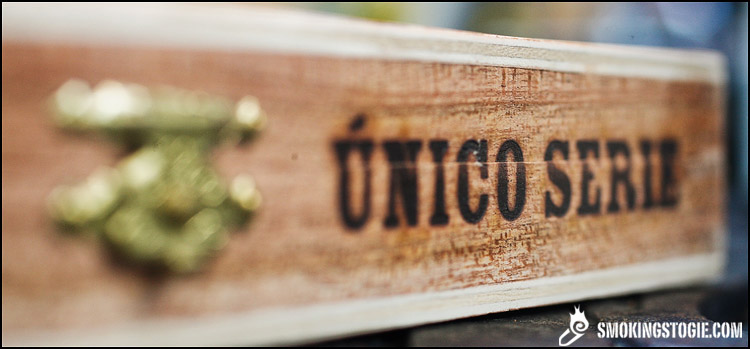
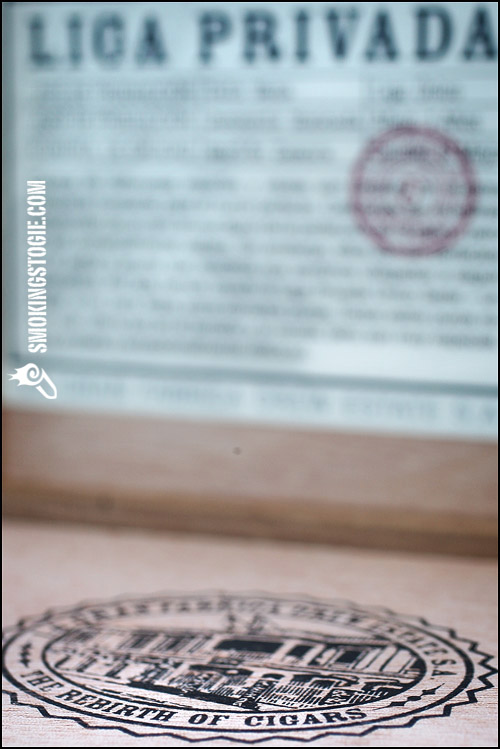
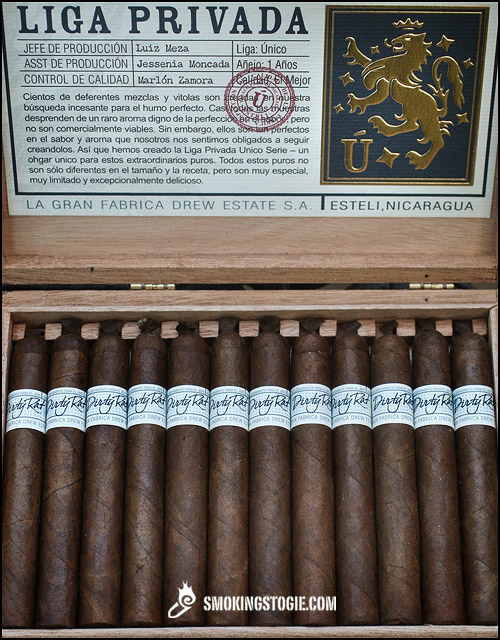
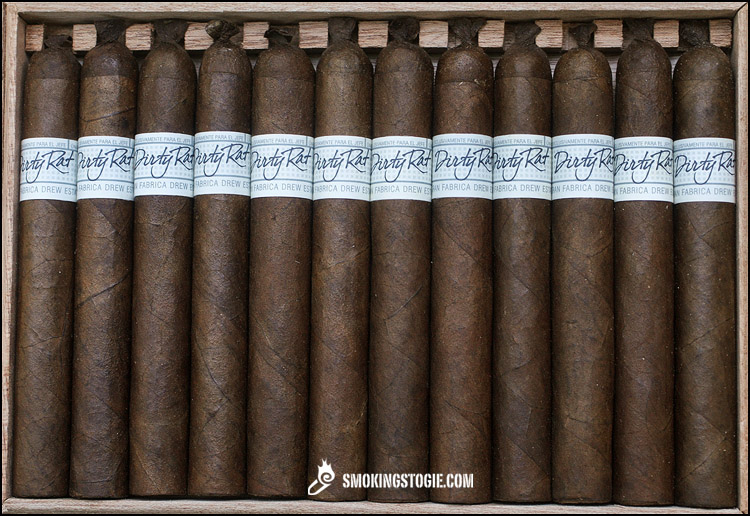

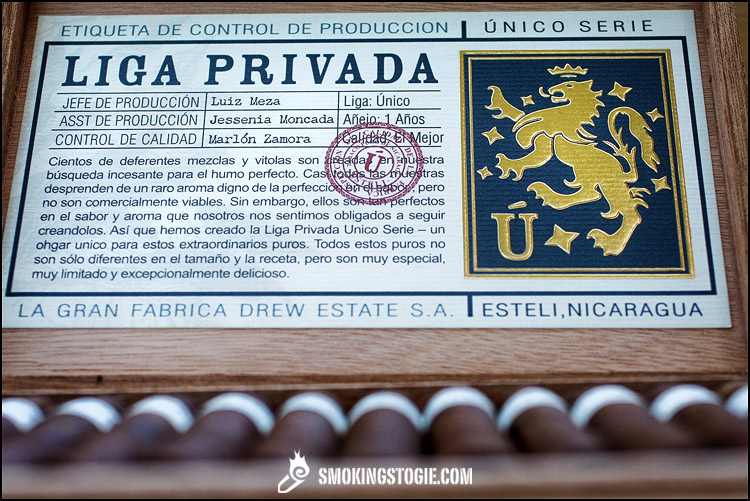

- Cigar Reviewed: Liga Privada Único Serie Dirty Rat
- Country of Origin: Nicaragua
- Factory: La Gran Fabrica Drew Estate
- Wrapper: Connecticut River Valley Stalk Cut & Cured Sun Grown Habano
- Binder: Plantation Grown Brazilian Mata Fina
- Filler: Nicaraguan & Honduras
- Size: 5 Inches
- Ring Gauge: 44
- Vitola: Corona
- MSRP: $12.00 (Boxes of 12, $144.00)
- Release Date: August 2011
- Number of Cigars Released: Regular Release
- Number of Cigars Smoked for Review: 4
The cigar itself is extremely attractive. It has quite a bit of oil on it and the darkish slightly reddish brown wrapper is quite rough to the touch. I love the pigtail as well, as it adds just a little bit of something extra to the cap. However, there are no major prominent veins. The cigar is very firm when squeezed and the wrapper smells of sweet earth, cinnamon and something that reminded me of spicy apples. Just a great smell coming from the cigar.
Interestingly, the wrapper on the preproduction and the regular release are not quite the same color, as the preproduction (left) is just a tad darker in tone than the regular production stick, although this is EASILY within normal production samples.
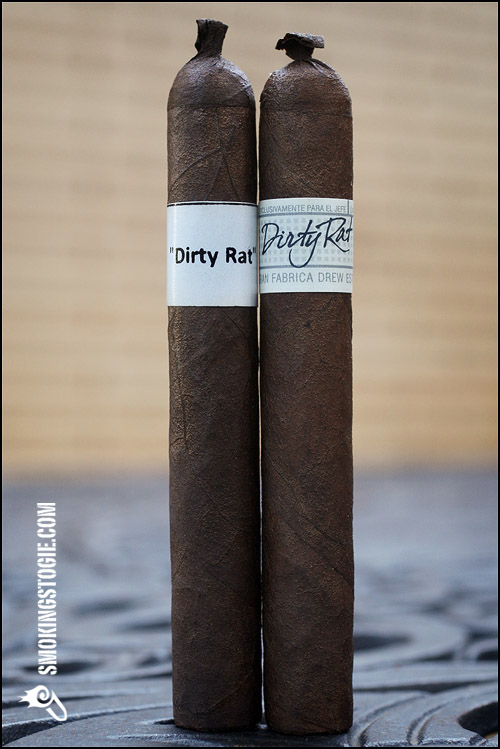
The first third started out with an immediate and somewhat overwhelming pepper and spice combo that would have shocked me if I had not been ready for it). However, the intensity faded after about ten puffs and continued to fade until it was just a great background note. Main flavors in the first third were a spicy earth, dark chocolate and cedar. A wonderful start to a cigar and the burn was great as well.
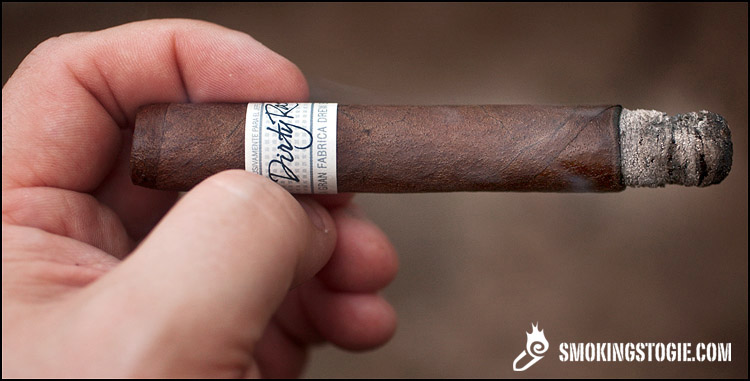
The flavors shifted abruptly around the start of the second third, with the profile becoming quite a bit more creamy in nature, but the spice that was present also picked up a bit. I started tasting some cinnamon and sweet cedar as well. The strength is slowly building and I can feel it starting to affect me.
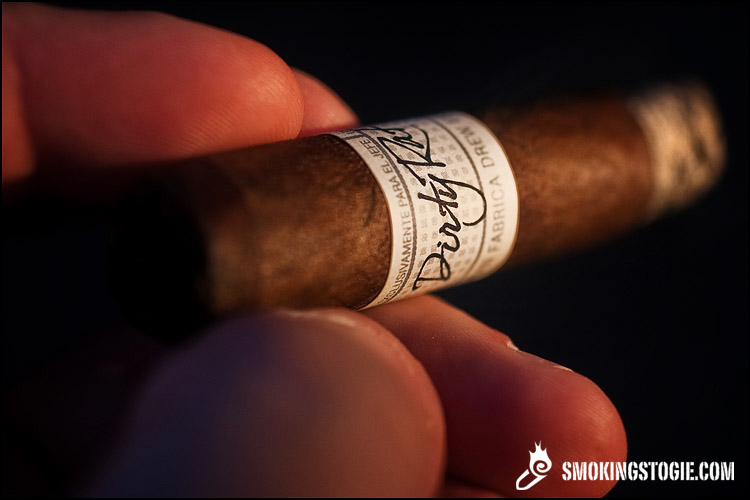
In the final third, the flavors that were present all seemed to coalesce into a wonderful combination that was literally so great I could do nothing but sit back and enjoy it. Sweet, spicy and creamy all at the same time with different flavors floating in and out the whole time. The strength definitely saved its punch for last, as it got VERY strong right at the end, as well as a bit bitter — nothing too bad (and nothing a little time down will not cure easily), but it was there. Of course, if I was not trying to smoke it to the nub, I probably would not have noticed.
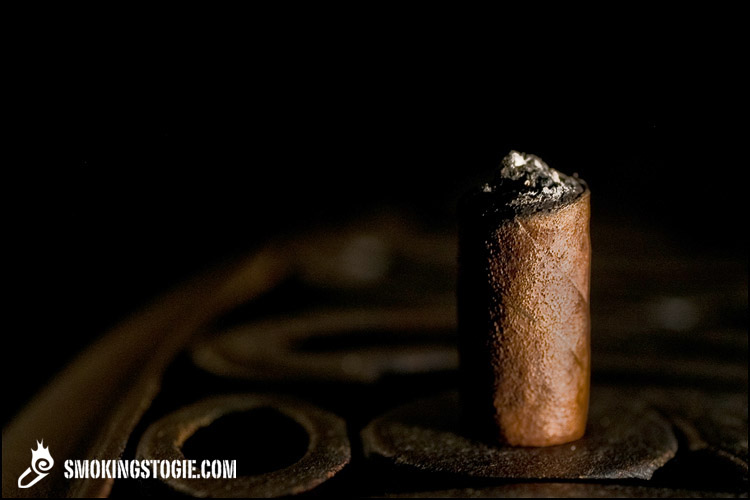
Final Notes:
- Again, I have to mention the amazing construction, burn and draw of this cigar and really, every Liga Privada I have smoked. I don’t know what they are doing over at La Gran Fabrica, but whatever it is, it works. PERFECT describes it, but barely.
- As with the preproduction samples, this is still a very strong cigar. However, I don’t think it was quite as strong as I remember the preproduction samples being. This could be due to any number of things (i.e. extra time age wise on the blend), but it is noticeably not as strong to me.
- This thing produces smoke like a freight train. Quite a bit more smoke then the smaller vitola would suggest and very spicy as well.
- This is the definition of a great stick to age. Over time, the strength, spice, pepper and flavors will all combine (even more) into an even more amazing smoke. Count on it.
- The finish was still excellent, as I expected.
- Compared to the preproduction sticks I smoked, the regular production cigars burned a bit quicker. My average time for the regular production sticks was about one hour and 25 minutes compared to about one hour and 40 minutes for the preproductions.
I ended my original preproduction review of the Dirty Rat literally begging Steve Saka to produce them. And thankfully, my wish has been granted. I contended then that if the blend stayed the same, that it would be one of the better cigars of the year, and I still think that. All of the great things about the preproduction samples I smoked have been retained in the regular production sticks: the refined strength, the complexity in the blend and the astounding construction. In fact, the only thing I can find fault with is the price, which, as Saka mentioned many times while testing this blend, is a bit expensive for the vitola you are buying. But honestly, this cigar is so good, I will find a way to forget about that every time I smoke one.

